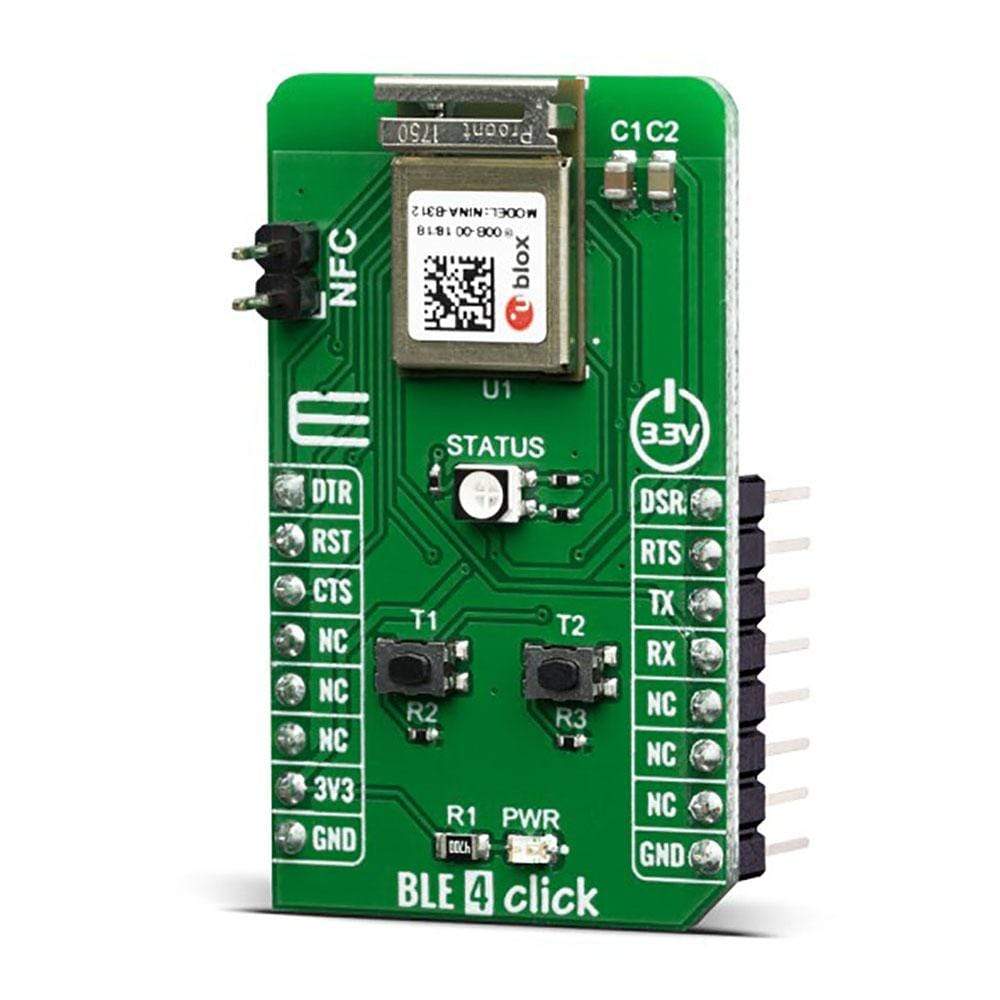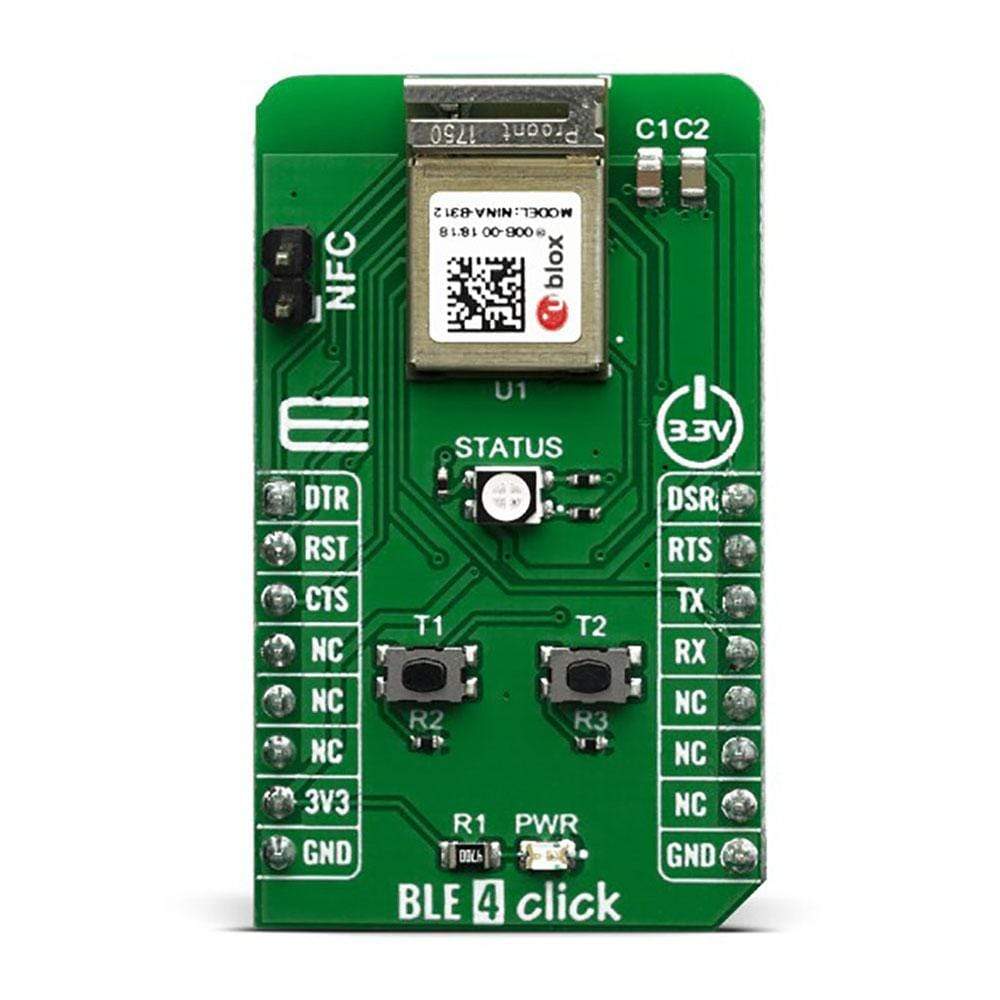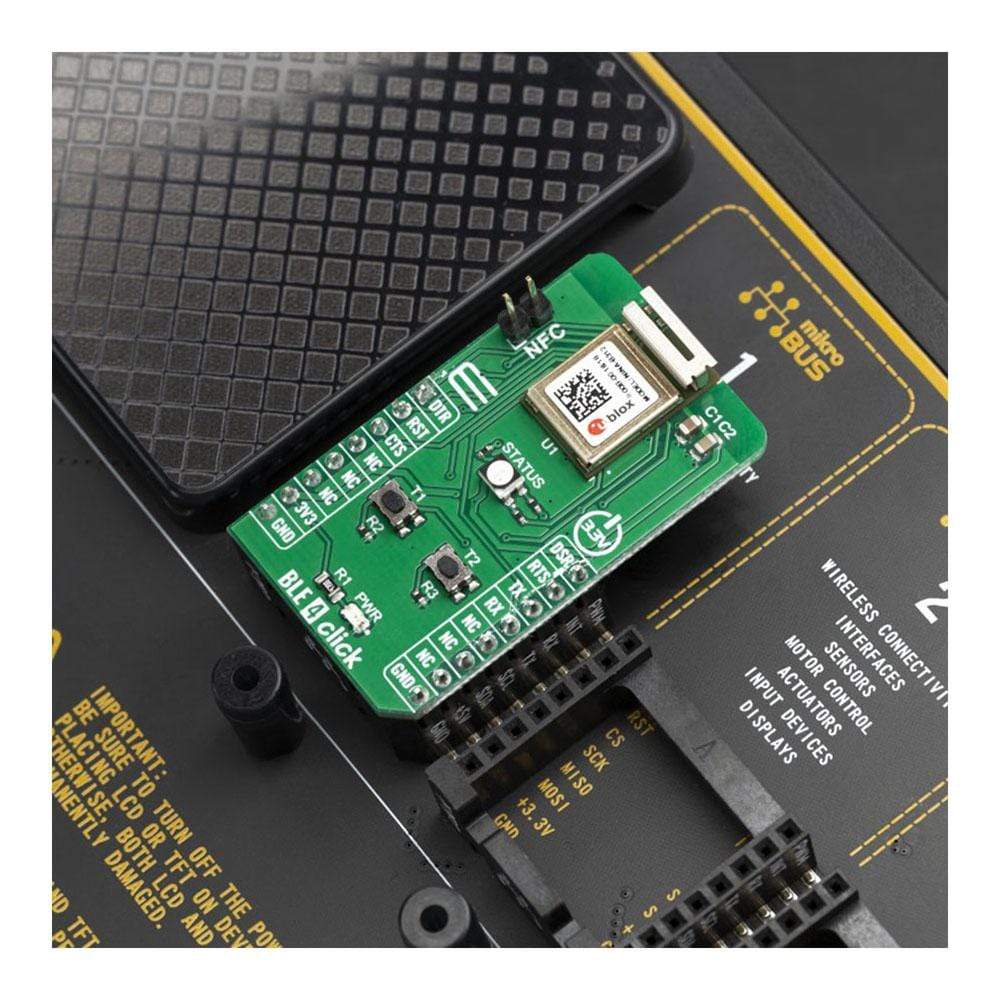



Overview
The BLE 4 Click Board™ is a fully embedded stand-alone Bluetooth 5.0 low energy connectivity module, equipped with the NINA-B312, an ultra-small, high-performing, standalone Bluetooth low energy module for easy integration of Bluetooth low energy connectivity (BLE) into various electronic devices. This module combines a high-performance Arm® Cortex®-M4 CPU microprocessor with FPU and state-of-the-art power performance. Reliable and easy to use, the BLE 4 Click Board™ is a perfect solution for the development of various IoT applications, smart home applications, BLE enabled toys, advanced robotics, and other similar applications.
The BLE 4 Click Board™ is supported by a mikroSDK compliant library, which includes functions that simplify software development. This Click Board™ comes as a fully tested product, ready to be used on a system equipped with the mikroBUS™ socket.
Downloads
Der BLE 4 Click Board™ ist ein vollständig eingebettetes, eigenständiges Bluetooth 5.0 Low Energy-Konnektivitätsmodul, ausgestattet mit dem NINA-B312, einem ultrakleinen, leistungsstarken, eigenständigen Bluetooth Low Energy-Modul zur einfachen Integration von Bluetooth Low Energy-Konnektivität (BLE) in verschiedene elektronische Geräte. Dieses Modul kombiniert einen leistungsstarken Arm® Cortex®-M4-CPU-Mikroprozessor mit FPU und modernster Leistungsleistung. Das zuverlässige und einfach zu verwendende BLE 4 Click Board™ ist eine perfekte Lösung für die Entwicklung verschiedener IoT-Anwendungen, Smart-Home-Anwendungen, BLE-fähiger Spielzeuge, fortschrittlicher Robotik und anderer ähnlicher Anwendungen.
Das BLE 4 Click Board™ wird durch eine mikroSDK-kompatible Bibliothek unterstützt, die Funktionen enthält, die die Softwareentwicklung vereinfachen. Dieses Click Board™ wird als vollständig getestetes Produkt geliefert und ist bereit für den Einsatz auf einem System, das mit der mikroBUS™-Buchse ausgestattet ist.
| General Information | |
|---|---|
Part Number (SKU) |
MIKROE-3773
|
Manufacturer |
|
| Physical and Mechanical | |
Weight |
0.018 kg
|
| Other | |
Country of Origin |
|
HS Code Customs Tariff code
|
|
EAN |
8606018717064
|
Warranty |
|
Frequently Asked Questions
Have a Question?
Be the first to ask a question about this.




